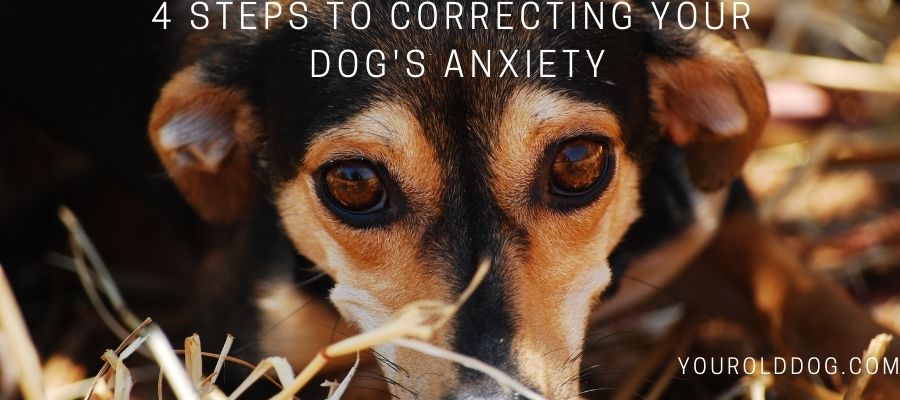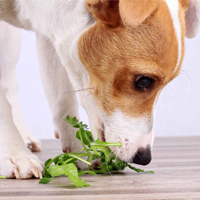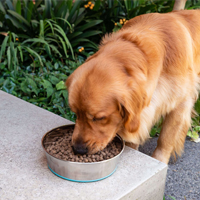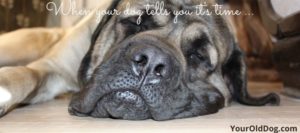
Correcting Dog Separation Anxiety in 4 Easy Steps
Separation anxiety is pretty common for dogs and especially those that come from shelters and/or have been abused, neglected or dumped by long time owners.
When we first brought our yellow lab Lulu home from the shelter, boy did she come with a lot of luggage including separation anxiety! That’s o.k. though, I loved her and all the luggage she came with.
What prompted me to write this article was a visitor who contacted me regarding his dog with severe anxiety issues. He initially commented on one of my articles regarding his dog having stool issues and he was looking for recommendations.
After talking with him several times, he also told me that his dog was extremely abused before he got her and she’s very nervous and anxious. She had been placed on Clomipramine (Clomacalm) which is a prescription anti-anxiety medication for dogs with severe anxiety problems.
Anyway, this conversation made me realize that there’s undoubtedly a lot of dog owners out there dealing with this particular problem. I also did another article discussing how dogs deal with stress.
I’ll go through the symptoms, causes and the best ways to tackle anxiety problems below:
Typical Symptoms
- Your dog becomes anxious when you grab your car keys or throw on your coat.
- The only time he seems to get into trouble is when you leave him.
- Your dog follows you everywhere and gets noticeably upset if he can’t be right by your side.buy rotacaps online https://www.amayadental.in/wp-content/uploads/2023/08/png/rotacaps.html no prescription pharmacy
Example: you leave him in the yard without you for several minutes and he goes ballistic for by barking and carrying on until you come back. - He’s out of control when you arrive home and calming him down is very difficult.
What Causes Anxiety in Dogs?
Dogs are of course pack animals and this means that they rely on others within the pack. The problem occurs when normal pack reliance shifts to total dependency.
There are quite a few reasons why dogs experience separation anxiety, but there are also times when there’s no explanation at all. The following circumstances are classic reasons why dogs develop this disorder:
- It’s VERY COMMON FOR SHELTER DOGS like my Lulu to experience anxiety.
- Dogs LOVE ROUTINE and any change in their normal routine can cause uncertainty and confusion.
- Spending a great deal of time with your dog due to lack of work, job change or any other reason; then suddenly you’re back to work, can cause distress for your dog.
- A dog left alone during fireworks, thunderstorms or any other occurrence that scared him, can cause separation anxiety.
- Moving to a new home can be extremely stressful for your dog and shouldn’t be taken lightly.buy champix online https://www.amayadental.in/wp-content/uploads/2023/08/png/champix.html no prescription pharmacy
Comfort him and let him know that - When there’s always somebody at home and the dog is very rarely left alone, he can become dependent on someone always being there with him.
Behavior Signals
Destructive behavior, crying, whimpering, going to the bathroom in the house, heavy panting, extreme salivation, licking, barking, chewing, panic attacks, diarrhea, jumping through windows, self harm, vomiting and trying to run.
Treatment for Nervous Dogs
- Always help your dog to feel secure by providing fresh cool water and a nice warm, cozy place to sleep when you’re not at home.
- Exercise is absolutely critical to keeping your dog content. Outside of good food and fresh water; I have found that exercise is vital to a dog’s physical and EMOTIONAL being. We can’t expect, nor should we want our dog’s to lay around all day. Dogs thrive when exercised. This has ALWAYS been a core element in caring for my own dogs. They need to know that they can rely on us to help them release some of that bottled up energy they have. Walk, run, play ball, roll around, play hide-n-seek, etc.
- You can also try leaving a small piece of your clothing for comfort.
- Leaving the radio or t.v. on can also provide comfort for many dogs with separation anxiety.
- I’ve always have two dogs at a time and I think that this really does make a difference vs one dog.
- Spend some one-on-one time with your dog teaching tricks or throwing his ball. Make it a routine.
- I have found that it’s best to NOT make your leaving into a big deal. I tell my dogs “I’ll be right back I have to go to the store”. The VERY IMPORTANT KEY to this statement is that my dogs know that when I use this phrase it means I’m leaving for a little while, but more importantly, I’ll be back. Establish your own phrase so that your dog identifies this.
- Doggy daycare is another good option.
- Although many dog trainers recommend dog crates. Honestly, I’ve never been a big fan and I guess it’s because none of my dog’s (all rescue) have ever needed them. Just like dogs who become to reliant on their owners; dog owners often become to reliant on dog crates. Although I realize that it’s necessary sometimes, dogs suffering with anxiety can hurt themselves trying to escape a crate.
4 Steps To Correcting Your Dog’s Anxious Behavior When Leaving the Home
Let me start by saying these steps will not work for all fearful dogs. The reasons behind why your dog developed this anxiety disorder in the first place will have alot to do with how he responds. For dogs like Scott’s with extreme anxiety issues, time and commitment on behalf of the owner are crucial to how the dog responds. Medication might also me necessary.
It’s important to slowly develop a comfort zone for these dogs and punishment should be avoided. I worked with Lulu for approximately 3 weeks before we were both comfortable with me leaving for a couple of hours.
- Start by desensitizing your dog. Each day put your shoes on, gather your keys, grab your coat and whatever else you typically take with you when you’re leaving and just walk around the house with it not going anywhere. Do this several times daily for five days.
- Put your shoes on, gather your keys and coat if necessary and have some dog treats in your pocket. Now, step outside the door without saying anything to your dog. STAND OUTSIDE THE DOOR WHERE HE CAN STILL SEE YOU. Stand there for maybe a minute, but it’s VERY IMPORTANT TO COME BACK INTO THE HOUSE BEFORE THE DOG STARTS TO SHOW SIGNS OF DISTRESS. Go back into the house and tell your dog “good boy/girl” and give her a treat. You want to do this several times a day for five days.buy amoxicillin online https://www.amayadental.in/wp-content/uploads/2023/08/png/amoxicillin.html no prescription pharmacy
- In step #3, you’re going to do the same thing only this time you will be stepping outside of the dog’s vision. DON’T PUSH THIS TOO QUICKLY. I recommend trying it for 10 seconds initially and then going back into the house and telling your dog “good boy/girl” and give a treat. Do it over and over several times a day while increasing the amount of time that she can’t see you.
- By step 4 you should be sure that your dog is remaining calm with you outside the door where he CANNOT see you. At this point you want to move to starting your car and actually taking a short ride down the street then coming back in and rewarding him. Next, extend the ride to around the block once or twice then reward your dog for good behavior.
A few of these steps are what worked for my girl Lulu. The Thundershirt has also proved to work very well for dogs experiencing other anxiety issues beyond just thunder. See my review.










